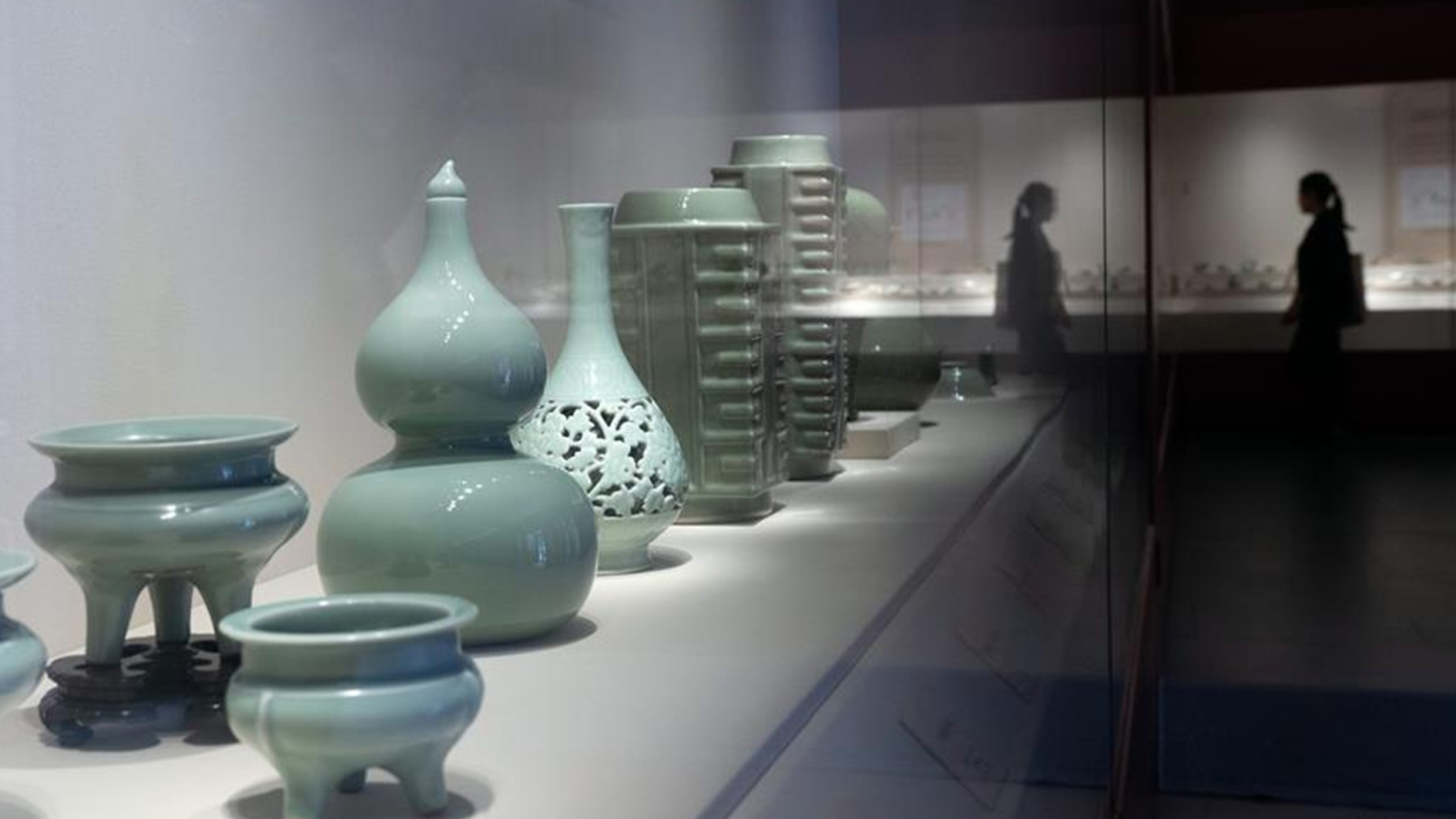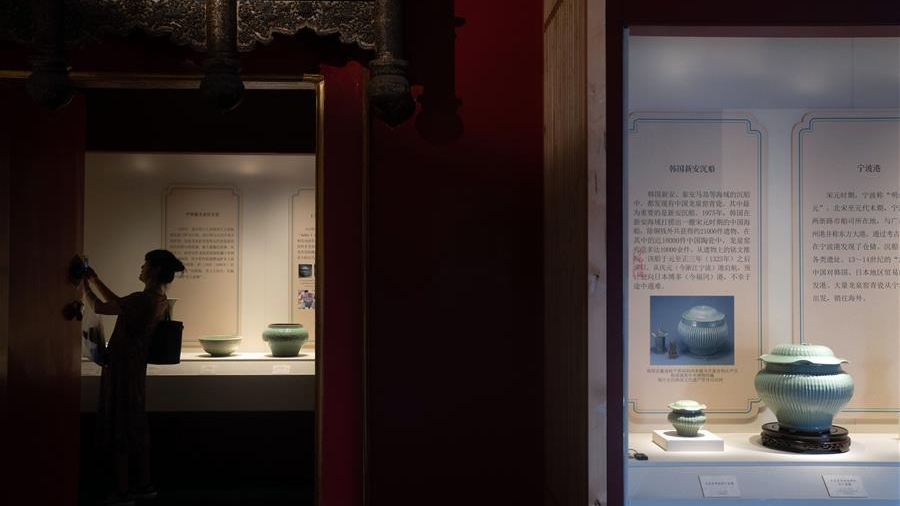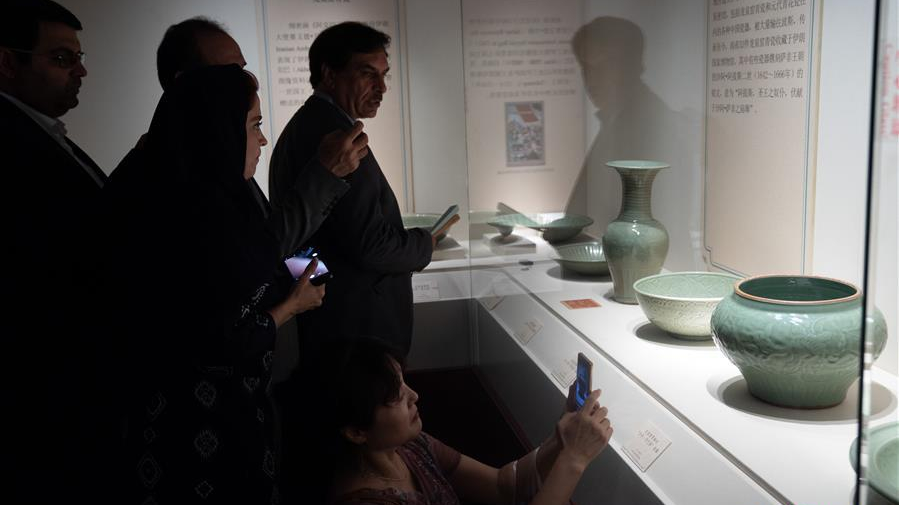

An exhibition featuring China's renowned Longquan celadon pottery opened at the Palace Museum in Beijing on Monday.
The exhibition, titled "Longquan of the World: Longquan Celadon and Globalization," aims to showcase the development of the green-glazed Chinese ceramic art throughout history, as well as its role in cultural exchanges between China and the rest of the world, said a museum press release.
A total of 833 items are on display. It's the largest number of Longquan celadon wares ever put on display at the Palace Museum. The collections come from 42 museums across the country and abroad, including the Palace Museum and the Zhejiang Provincial Museum in China and museums in Iran, Japan, Egypt and the United Kingdom.

A woman visits an exhibition featuring China's renowned Longquan celadon pottery at the Palace Museum in Beijing, China, July 15, 2019. /Xinhua Photo
"In recent years, the Palace Museum has contributed to many international archaeological projects. Many cultural remains related to Longquan celadon were discovered during the process. Aside from showing off the country's centuries-old treasures, the exhibition can also cause a stir among young visitors during the summer vacation," said Shan Jixiang, chief of the Palace Museum Research Institute.
Longquan celadon wares were unearthed in archaeological sites throughout China, as well as in digs and ancient shipwrecks along the historic Maritime Silk Road — a testament to its popularity.
The techniques and styles used for Longquan celadon have been imitated by countries like Iran, Japan, Vietnam and Britain. The spread of the Longquan celadon across the world has, in some ways, made it a symbol of cultural exchange.
Shen Qionghua is a researcher at the Zhejiang Provincial Musuem and the curator of the exhibition. "Since 2009, we have been devoted to research on the globalization of the celadons produced in Zhejiang. Then, we discovered the ceramics, as well as the techniques, and the culture they bear, were widely recognized in many countries along the ancient Maritime Silk Road. I think our research fits well with China's Belt and Road initiative. The celadon acts as a good medium in promoting exchanges between countries," said Shen.

People visit an exhibition featuring China's renowned Longquan celadon pottery at the Palace Museum, July 15, 2019. /Xinhua Photo
The exhibition will run until October 20 before moving to the Zhejiang Provincial Museum where it will be on display from November 15 to February 16, 2020.
Longquan celadon refers to ceramics produced in large kilns in Longquan, Jincun and other sites in Zhejiang Province on the east China seaboard as well as ceramics made elsewhere using the same techniques. The making of Longquan celadon dates back to the Northern Song Dynasty (960-1127).
In 2009, the traditional firing technology of Longquan celadon was inscribed on the Representative List of the Intangible Cultural Heritage of Humanity by UNESCO.
Yu Fengsheng contributed to the story. With input from Xinhua News Agency.

Copyright © 2018 CGTN. Beijing ICP prepared NO.16065310-3
Copyright © 2018 CGTN. Beijing ICP prepared NO.16065310-3